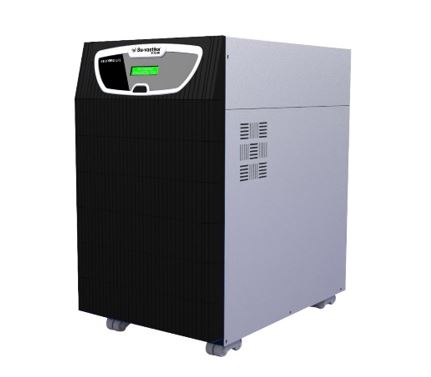Understanding On-grid, Off-grid and Hybrid Solar System
On-grid Inverter
On-grid or grid-tie solar inverters are by far the most common and widely used by for homes and commercial purpose. These inverters do not require batteries and use solar inverters and are connected to the electricity grid. Whatever excess solar power is generated is exported to the electricity grid and owner get paid a feed-in-tariff (FiT) or credits for the energy you export.
But there is a challenge, On-grid solar inverters or Grid Tied Inverters are unable to work or generate electricity during a blackout due to safety reasons. Since blackouts usually occur when the power grid is malfunctions; If the solar inverter was still feeding electricity into a damaged grid it would risk the safety of the people repairing the fault/s in the network. It also stops working during voltage fluctuation. In both the cases there will be wastage of Solar Energy.
Off-grid Inverter
Off-grid inverters are not connected to the power grid that is why they require batteries for power storage. Off-grid solar systems must be designed such a way that they generate enough power throughout the year and have enough battery capacity to meet the home’s requirements, even in winters and monsoon when there is less sunlight.
High cost of batteries and off-grid inverters means off-grid systems are much more expensive compare to on-grid systems and so are usually only needed in places which are in remote areas and are far from power grid like vacation homes, resorts, farm houses etc.
What is Hybrid Solar System?
A hybrid solar system has best of both On grid and off grid. It combine solar and battery storage in one and are now available in many different sizes and configurations. Due to the decreasing cost of battery storage, systems that are already connected to the power grid can start taking advantage of battery storage as well. This means storing solar energy which is generated during the day and it at night. When the stored energy is less, the grid is there as a back-up, allowing consumers to have the best of both worlds.
Hybrid Solar Inverter allow full control over your power, while keeping you grid-connected in case of emergency. Hybrid Solar systems generate power similar to a normal grid-tie solar system but use special hybrid inverters and batteries to store power for later use. This quality to store energy enables most hybrid systems to also operate as a backup power supply during a power outage like UPS.

If there is a power failure or the grid becomes unstable the unit will automatically switch over to battery supply immediately and continue to operate independently from the electricity grid.
Why to store solar energy in a battery?
Many governments and network operators have reduced the solar feed-in tariff or FiT. This means traditional grid tied systems have become less attractive as most people are working during the day and not at home to use the solar energy as it is generated, thus the energy is fed into the grid for very little return.
A solar hybrid system stores your excess solar energy and can also provide back-up power during a power outage. This is perfect for domestic use, farm houses, resorts, vacation homes etc.
Hybrid Solar Systems enable you to store solar energy and use it when you face an electricity cut.
The ability to store and use your solar energy when desired is referred to as self-use or self-consumption. It works in the same way as an off-grid power system but the battery capacity required is far less, usually just enough to cover peak consumption (8 hours or less) as opposed to 3-5 days with a typical off-grid system.
Key benefits of hybrid systems

Hybrid inverters have many advantages – here are some of the top ones to consider:
Flexibility
A common misbelief about solar is that if you install a Grid Tied inverter, you’ll always have power during outages. In most cases, this is not true. Traditional GTI systems automatically shut off during power failure for safety purposes, cutting off power generation from your solar panel system.
If you want to keep your home or commercial establishment running on backup solar power during a grid failure, hybrid solar system paired with batteries are perfect solution. Some hybrid inverters have both on-grid and off-grid capabilities, allowing you to continue running on solar power even if the grid fail.
Easy Monitoring
With a hybrid solar inverter, all of your solar electricity–whether being sent to the grid, self-consumed on your property, or being stored in your battery–is converted through one component. This allows for “centralized monitoring,” which means you can monitor both your solar panel system and battery performance through one platform.
Easier installation process
One of the biggest benefits of a hybrid solar inverter is that it combines the functionality of two separate pieces of equipment into one. This mean an easier installation process for your solar installer. Depending on the prices of the individual components and the labour cost, you may save money by installing a hybrid inverter from the get-go as opposed to paying for both a solar inverter and a battery-specific inverter separately.
Future-ready (Add- on is possible)
A hybrid system is possibly the most expandable, future-ready home solar setup. With some customisable hybrid systems, you can expand capacity by buying more panels or batteries. Hybrid systems may also be compatible with newer solar technologies — for example, an electric vehicle (EV) might function as one of the ‘batteries’ in a hybrid setup.
Latest Technology
While Off Grid is an obsolete technology, Hybrid Solar System is latest, cost effective and more useful.

